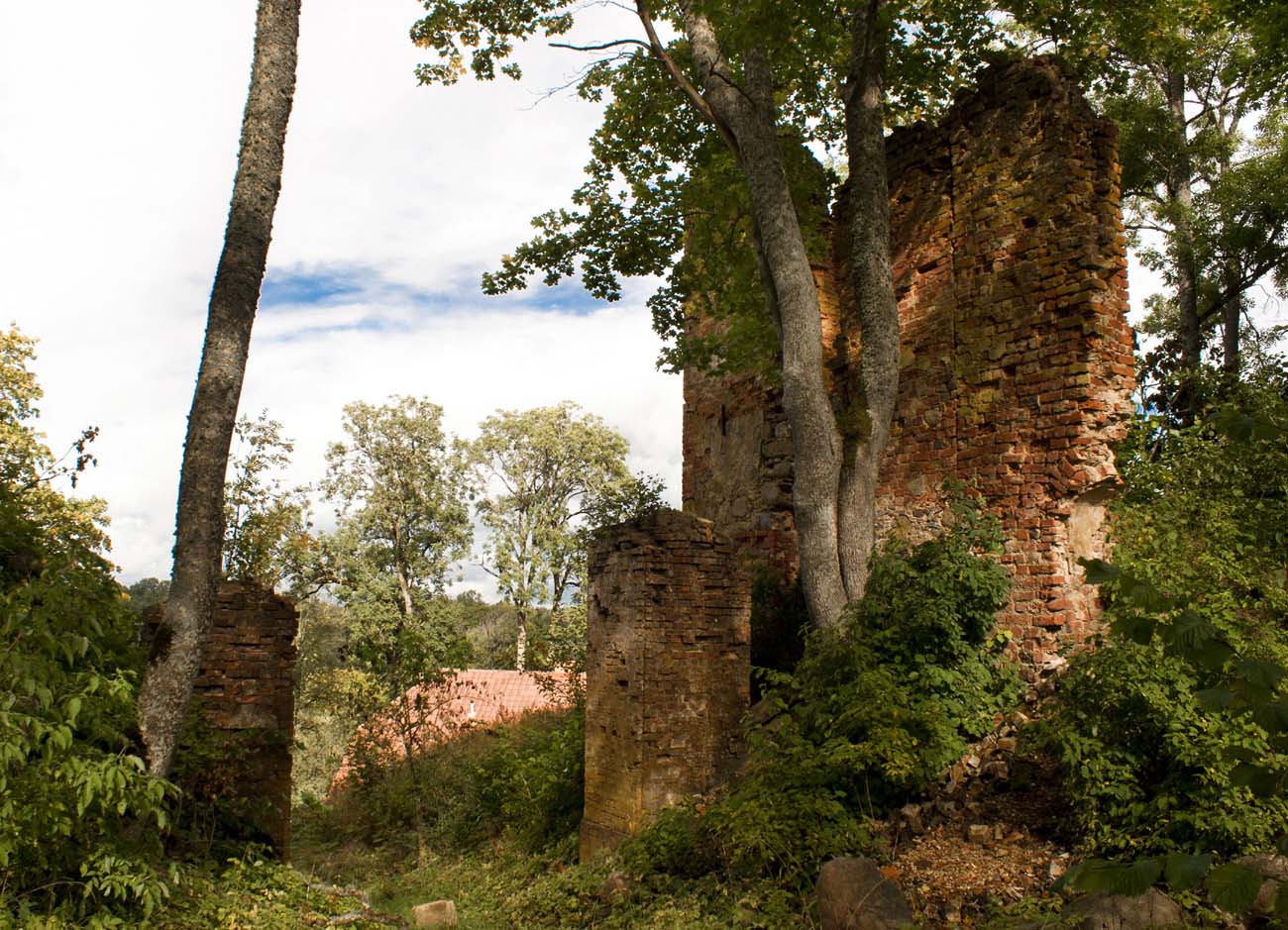History
According to the 14th-century chronicler Hermann von Wartberge, Amboten Castle was built in 1265 by the Teutonic Land Master of Livonia, Konrad von Mandern. This information may have been true, as the castle was first recorded in documents in 1290. Since these areas were assigned to the bishopric of Courland, the castle’s legal status remained uncertain. For most of the 13th century, it was the seat of the Teutonic vogt, and only towards the end of the century was the building finally granted to the bishops of Courland, who turned it into one of their residences. They managed the castle until the 16th century, but even before the secularization of Livonia, around 1537, Amboten passed into private hands. In the following centuries, the castle was destroyed several times, including during the Swedish-Russian war in the mid-17th century and in 1702 during the Great Northern War. Rebuilt, it remained in the hands of German landowners from the von Mirbach family, who built an early modern manor house on part of the medieval foundations in the 18th century. Together with the castle ruins, they finally abandoned it after a fire in 1920. Since then, both buildings have been left in ruins.
Architecture
The castle was built on a not very high hill, surrounded by lakes and streams feeding them. Amboten was a small castle consisting of a single defensive wall surrounding a courtyard with an irregular, slightly oval shape, adapted to the shape of the hill. The most important element of the fortifications were two semicircular towers placed in the north-eastern part of the castle, protecting the gate between them, probably built at the end of the Middle Ages. The residential buildings were probably located on the opposite side of the courtyard. The defensive wall of the castle was built of erratic stones, and brick was also used in the construction of the gate complex.
Current state
Currently, on the completely forested castle hill, relatively high fragments of brick walls have been preserved, most of which date back to the Middle Ages, but are interspersed with early modern additions. The remains of one of the gate towers reach a considerable height.
bibliography:
Borowski T., Miasta, zamki i klasztory. Inflanty, Warszawa 2010.
Herrmann C., Burgen in Livland, Petersberg 2023.


